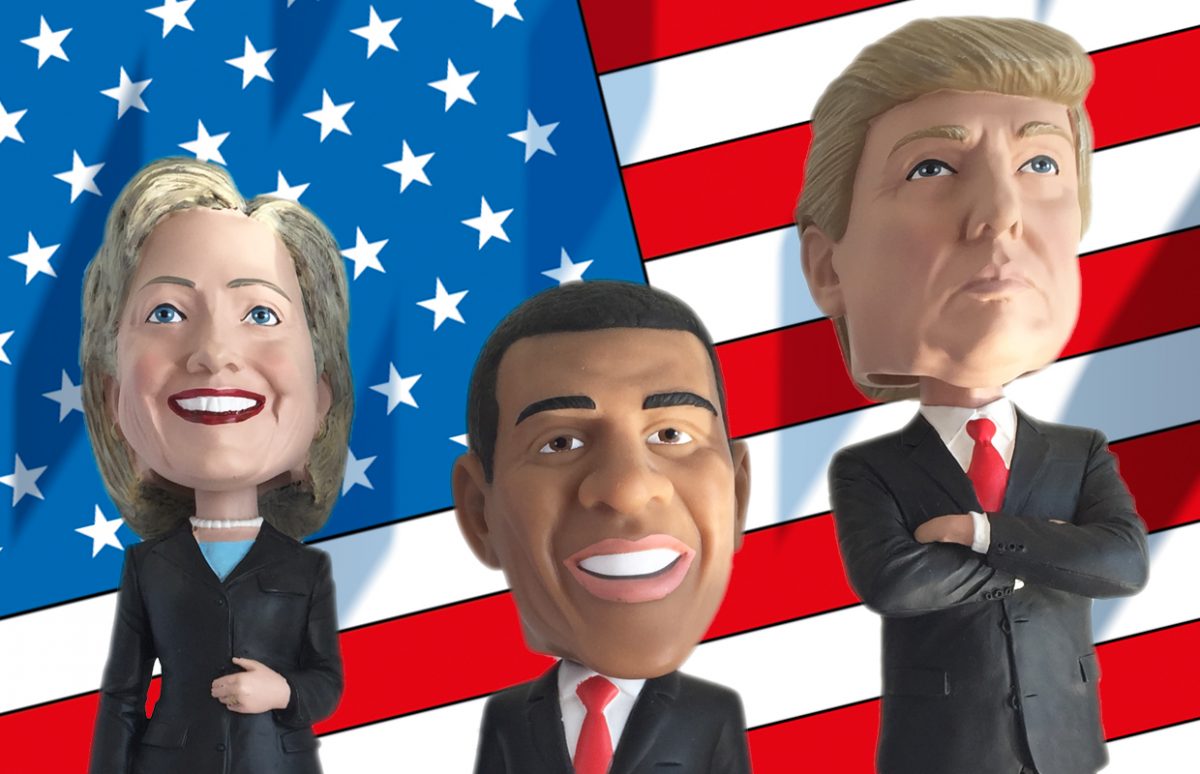We’ve sifted through the many resources online about the U.S. elections to find the ones best adapted for use in collège and lycée classes.
The U.S. presidential elections is a hot topic and information is constantly changing. A lot of what is available online is too difficult for non-native speakers, who, as well as the language barrier, often have difficulties with cultural references. For example, in their own political system, even fairly young pupils have a rough idea of whether the main political parties are left-wing or right-wing, socialist or conservative.
There’s no particular reason why they would know which camp to place the U.S. Democrat and Republican parties in. And in resources for native speakers, the colours used to symbolise the two parties are the exact opposite of those used in Europe: red for the Republicans (right-wing), and blue for the Democrats (left-wing, or at least left of the Republicans)!
This handy U.S. election dictionary for kids, for CBBC Newsround, would be a good reference when using the various sites below.
The Electoral Process
A good starting point for discussing the electoral process with your pupils is this downloadable poster from the U.S. government.
At A1+ level, pupils can observe the visuals and key words.
At A2, they can be asked to focus on the four steps. You may not want to bother with the requirements to be a candidate or the distinction between primaries and caucuses, or even the electoral college at this level.
At B1, they should be able to follow most of it.

You can find an article explaining the electoral process in the Banque de ressources anglais cycle 4. It is provided in three progressively difficult versions: A1+, A2 and B1. It gives an overview of how the president is elected, and is accompanied by interactive comprehension activities and suggestions for EPI projects. To see the article, register now or log in. Then go to: Articles de presse > A1+, A2, B1 > Information, communication, citoyenneté > "Voting for the President"/
There is also an A1+ audio interview with a first-time voter: Audio > A1+ > Rencontres avec d'autres cultures > > Interview > "First time voter"
If you’d like to work online – either videoprojecting or sending the pupils to the site – this site designed for young Americans is visual and clear.
The information about the electoral process appears as you scroll down, and will be added to in “real time” as the campaign progresses.
The site is generally fairly simple but there are quite a lot of idiomatic expressions that could throw pupils.
A2-level pupils can use it with guidance – pick and choose the parts you want them to concentrate on.
B1-level students can cope autonomously as long as they are reminded they don’t need to understand every word.
This is a simple guide to the election process from the BBC. It was written for the 2008 election, but the process is the same.
This U.S. government video explains the process:
This is called "Electing a U.S. President in Plain English" – the English and the graphics are clear. But it focuses on the actual election and specifically the electoral college, rather than the whole process.
The 2016 Candidates
From B1 level, it is worth having students look at the biographies of the candidates on their own websites.
This would make a really interesting group activity with each group trying to fill in the same grid – you might have to put them out of their misery after a few minutes by pointing out that there will be a lot of boxes they can’t fill in, as the candidates give very different information about themselves.
Hillary Clinton’s biography focuses on her work in the political sphere, particularly her advocacy on health-care and children’s rights. Her running-mate Tim Kaine gets equal space and exposure.
Donald Trump’s is almost exclusively about his business activities. Where politics are mentioned, it is often in relation to funding campaigns. His running mate Mike Pence doesn't get a mention.
Names and Tone
Ask pupils what names are used to refer to the candidates on their own site. Hillary Clinton is mainly referred to by her first name. Donald Trump is almost systematically Mr. Trump. They should be able to pick up that “Hillary” is less formal.
More advanced groups might be able to hypothesise that Hillary Clinton may want focus to be on her first name to distinguish her from her husband Bill, the former President. (When Hillary Clinton was First Lady, she tried to continue to use her own name, Hillary Rodham or at least Rodham Clinton, but seems to have given up the attempt.)
Who's a Lame Duck?
There is a lot of colourful language associated with the U.S.'s unique electoral system. This article elucidates some terms like "lame-duck" president with helpful illustrations, and is easy enough for pupils from B1.
The Election Calendar
February-June: Primaries
The Democratic and Republican voters in each state vote to choose their favourite candidate.
July: Conventions
The two parties have their conventions to choose their candidates for President and Vice-President.
8 November, Election Day
Citizens vote on election day, but the popular vote doesn't directly elect the President. Each state has a number of Electors for the Electoral College. The candidate who wins the popular vote in a state gets all the state's Electoral College votes.
December
The Electoral College confirms the election of the president.
Inauguration
20 January, 2017, the 45th president is inaugurated.
Copyright(s) :
Photo © PYS
Tag(s) : "2016" "article" "BRNE Cycle 4" "citoyenneté" "Clinton" "communication" "elections" "Information" "lieux et formes du pouvoir" "president" "Trump" "U.S.A."





